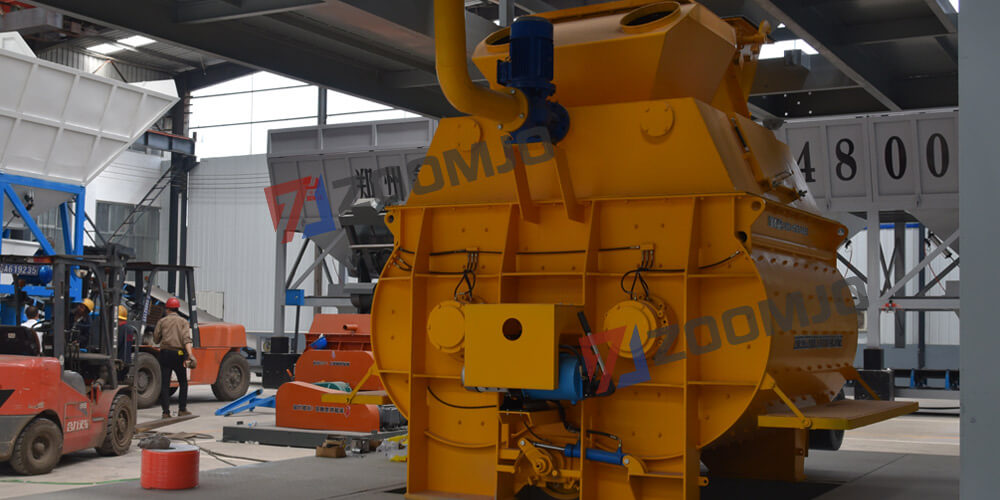What Are The Concrete Batching Plants and Parts

Concrete mixing plant is a key facility used in the construction industry to produce ready-mixed concrete. It ensures the quality and consistency of concrete by precisely mixing raw materials such as crushed stone, sand, water and cement. In this article, we'll take an in-depth look at the main components of a concrete mixing plant and their functions, as well as how they work in tandem to improve productivity and concrete quality.
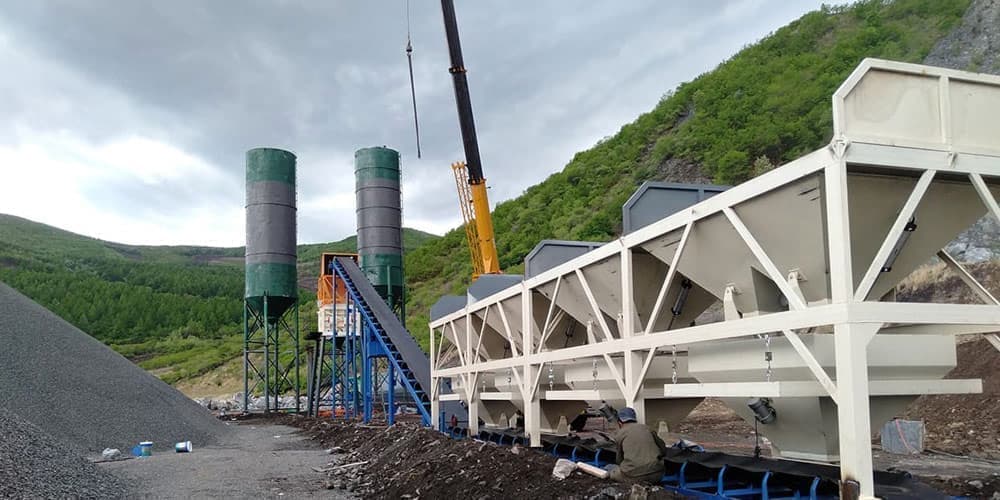
Benefits of a Concrete Batching Plant
Concrete mixing plants produce concrete for a variety of construction projects by automating the process of mixing raw materials in predetermined proportions. This automation not only increases productivity but also ensures consistent concrete quality. Compared to traditional manual mixing methods, mixing plants are able to drastically reduce labour requirements while increasing production speed and quality control.
Main components and their functions
1. Aggregate hopper
The aggregate hopper is the storage and feeding part of the mixing plant, which holds different types and sizes of aggregates such as sand and gravel. The design capacity of the hopper is based on the production capacity of the plant and ensures continuous feeding. An accurate weighing system is the key to this section, which ensures the precise placement of each type of aggregate and thus the accuracy of the concrete proportioning.
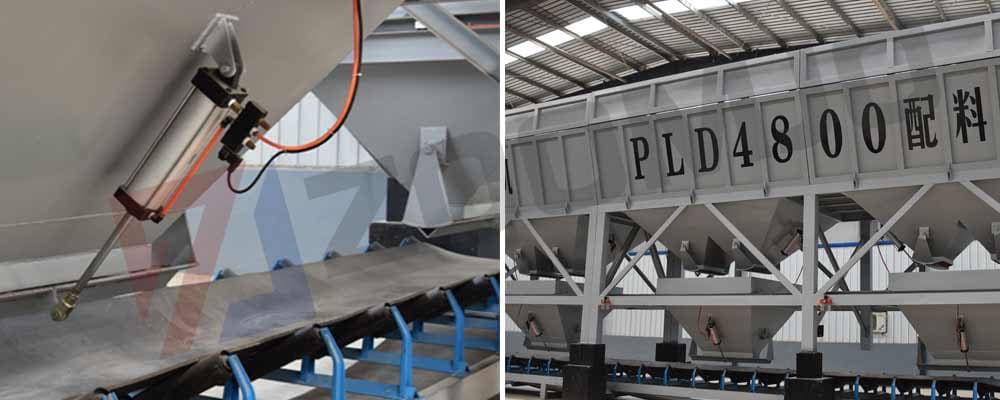
2. Aggregate weighing conveyor
The aggregate weighing conveyor is responsible for transporting the aggregate from the hopper to the mixer. The accuracy of the weighing is crucial in this process as it directly affects the final quality of the concrete. High quality load cells and stable software communication are the key to accurate weighing.
3. Aggregate transfer conveyor
The Aggregate Transfer Conveyor transports the weighed aggregates to the mixer. Its carrying capacity varies according to the capacity of the mixing plant to suit different production needs. The design of the conveyor belt includes the type of belt, motor power, reducer, etc., as well as an emergency stop system to ensure safe operation.
4. Weigh hoppers for cement, water and additives
These weighing hoppers are responsible for the accurate measurement of the quantity of cement, water and additives to be placed. By communicating with components such as computer systems, PLCs, sensors, etc., they ensure the accurate placement of these ingredients, thus ensuring the strength and stability of the concrete.
5. Concrete mixer
The mixer is the core component of the mixing plant and is responsible for mixing all the ingredients into a homogeneous concrete. There are three main types of mixers:
-
Pan mixers: suitable for small to medium batches of concrete production, favoured for their homogeneous mixing and ease of cleaning and maintenance.
-
Planetary mixers: favoured for their complex mixing action and high quality mixtures for high performance concrete production.
-
Twin Shaft Mixers: favoured for large projects for their high efficiency and high volume production capabilities.
6. Cement silos
Cement silos are used for storing and distributing cement, ensuring that it is stored in a dry and controlled environment, preventing caking and quality deterioration. The silos are available in capacities ranging from a few tonnes to several hundred tonnes to meet the needs of different sized mixing plants.
7. Screw conveyor
Screw conveyor is used to transport cement from the silo to the mixer to ensure accurate placement of cement. It consists of a rotating spiral blade capable of handling various types of materials.
8. Air Compressor
The air compressor supplies compressed air to the mixing plant to drive pneumatic valves, actuators and other control systems to ensure efficient and accurate operation of the mixing and blending process.
9. Control room and main system software
The control room and master software is the nerve centre of the mixing plant, providing centralised control and automation. Operators can monitor and manage the system from the control room to ensure accurate and efficient production.
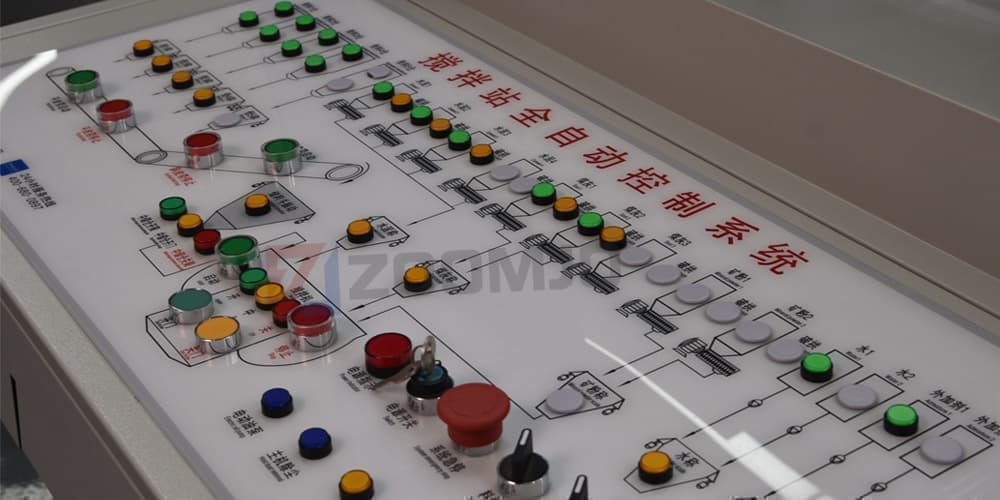
10. Valves, pistons and motors
These components are controlled by the PLC system and are responsible for regulating material flow, operating gates and hoppers, and driving conveyor belts and mixers, among other things. Their precise control is essential to ensure the quality of concrete.
Overall, a concrete mixing plant is a complex and sophisticated system, and each of its components plays an important role in ensuring concrete quality and production efficiency.
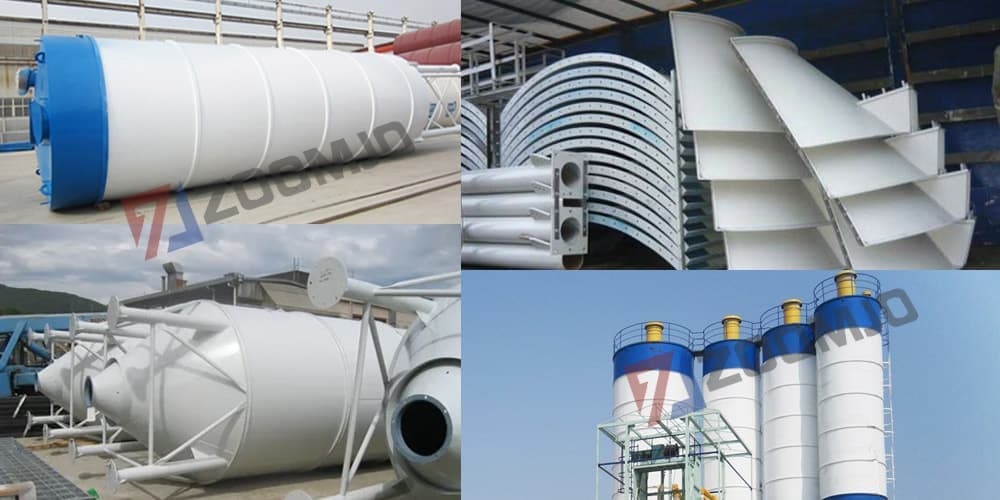
The working principle of concrete mixing plant
The working process of concrete mixing plant generally includes the following steps:
-
Batching: According to the requirements of project design, weigh all kinds of raw materials (cement, aggregate, water, additives) according to the precise proportion.
-
Conveying: The weighed materials are fed into the mixer.
-
Mixing: The mixer mixes all materials evenly through mechanical stirring to form uniform concrete.
-
Discharge: Discharge the mixed concrete through the discharge port and send it to the construction site.
Classification of Concrete Batching Plant
Although the main components and working principles of mixing plants are generally similar, according to different construction needs and environments, concrete mixing plants can be classified into various types, mainly including fixed, mobile and commercial concrete mixing plants.
Fixed Concrete Batching Plant
Stationary batching plants are usually used in large-scale projects, and they have large production capacity and perfect configuration. These plants are favoured for their high efficiency and consistent concrete quality. The specifications of stationary mixing plants are usually named after their theoretical production capacity per hour, such as HZS25, HZS35, HZS50, etc., where the number stands for the theoretical maximum production capacity (cubic metres) per hour. Fixed mixing plants are suitable for long-term and stable production needs, but their installation and dismantling process is more complicated and requires certain professional skills.
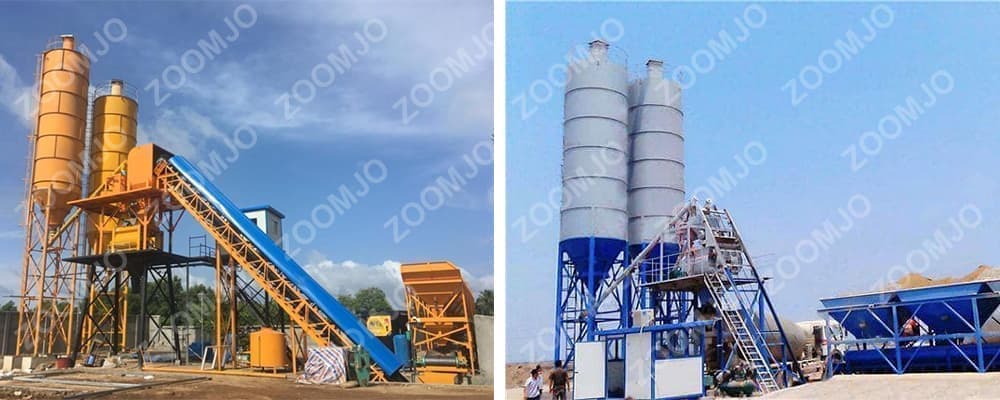
Mobile Concrete Batching Plants
Mobile mixing plants are designed with a focus on flexibility and portability, allowing them to adapt quickly to different working environments and needs. This type of plant is usually used for small and medium-sized projects or for construction projects that require frequent site transfers. Mobile mixing plants are compact and easy to transport and install, but they have a relatively small production capacity and are suitable for occasions where the demand for concrete is not great.
Commercial Concrete Batching Plant
Commercial concrete mixing plants are mainly used to produce commercial concrete and sell it to building construction units. These plants usually have a high degree of automation and quality control standards to ensure that the concrete produced meets the needs of different customers. Commercial concrete mixing plants are characterised by high efficiency, economy and meet environmentally friendly requirements.
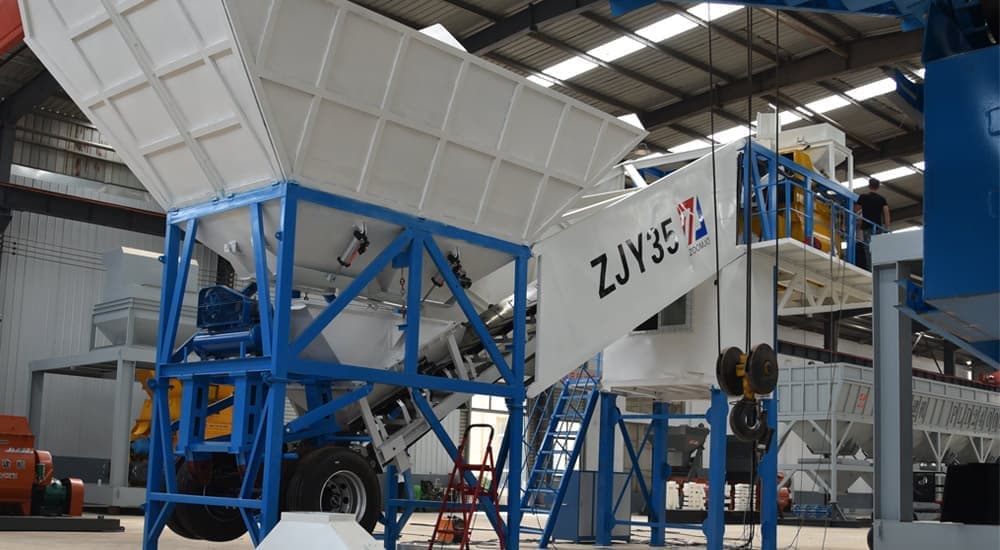
Choosing the right concrete mixing plant
When choosing a concrete mixing plant, there are several key factors to consider:
-
Quality: choosing high-quality equipment can ensure long-term reliable operation.
-
Regular maintenance: Regular inspection and maintenance of the equipment can extend its service life and maintain high efficiency.
-
Precise calibration: Ensure the accuracy of the weighing system, which directly affects the quality of the concrete.
-
Professional support: Choose experienced manufacturers who can provide comprehensive technical support and after-sales service.
By taking these factors into consideration, users can choose the concrete mixing plant that best suits their project needs to ensure smooth construction and concrete quality.
Conclusion
Concrete mixing plant is a key equipment to improve the efficiency and quality of construction. By understanding its main components and working principles, users can better select and maintain the mixing plant to ensure its efficient operation. Choosing a high-quality concrete mixing plant not only improves productivity, but also ensures the consistency and reliability of the concrete. Through regular maintenance and calibration, you can ensure that the mixing plant operates stably for a long period of time, providing high-quality concrete for construction projects.

 English
English  Español
Español  简体中文
简体中文  Pусский
Pусский  українська
українська 